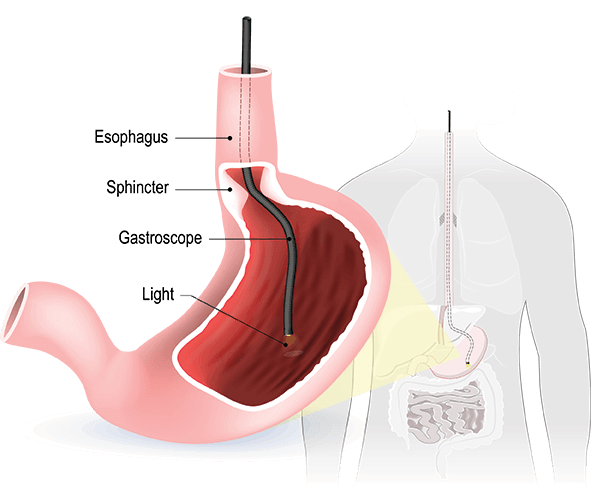gastroscopy
what is a
gastroscopy?

Gastroscopy, Endoscopy, Panendoscopy, and Oesophagogastroduodenoscopy (OGD) all refer to the same procedure.
You should have nothing to eat or drink for 4 hours before your procedure. There is no bowel preparation to be taken at home.
You will be given a sedative through a vein in the arm or hand before the procedure to make you more comfortable.
As drugs are used, and x-ray screening is occasionally used during and following the procedure, it is essential for female patients that there is no possibility of pregnancy. You must advise the nursing staff if you have any doubts about this.
You should advise the nursing staff if you are sensitive (allergic) to any drug or other substance.
Please do not stop any blood thinners or anti-coagulants unless directly advised to by your doctor. You should also inform your doctor if you have heart valve disease or have a pacemaker implanted.
A gastroscope or colonoscope is a flexible tube about 9-12mm in diameter. It allows full colour inspection of the rectum and sigmoid colon. It also allows biopsies to be taken from the stomach, food pipe and small bowel and other areas.
This test is usually simple and safe. It is very unlikely to cause any serious problems for patients.
Extremely rarely, individual patients may have a reaction to the sedation or damage to the food pipe or stomach at the time of examination. Such complications are extremely rare, however, if you wish to have full details of all possible rare complications discussed before the procedure, you should inform your doctor.
A more comprehensive discussion of the risks is included in the downloadable information sheets below.
The procedure will take between 5 and 15 minutes and you will be sleepy for about half an hour afterwards. A relative or friend must pick you up. You may not leave unaccompanied.
If you have any severe abdominal pain, bleeding, fever or other symptoms that cause you concern, you should contact your doctor immediately.
